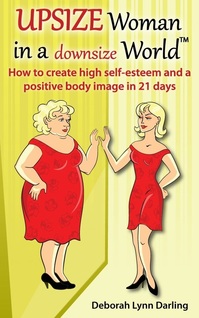For years we have heard people described as being introverted or extroverted. Numerous books have been written on the subject of whether one falls into a more introverted personality style or a more extroverted personality style. I don’t know about you, but whenever I would take the test, I was introverted in some areas and extroverted in others. It wasn’t until recently that I realized there is another category all together called the “ambivert” which falls smack dab in the middle of the two.
When I am teaching or performing there are few people more extroverted than I am. I am in my element and in control and immediately go into my very outgoing, extroverted, make everybody feel comfortable mode. However, put me at a noisy, crowded bar or at a big party where I don’t know a soul and I am the shyest person in the room. People who don’t know me well can never imagine there is any part of me that is introverted. Everyone I know says I portray a larger than life persona and they are most accurate, that is who I portray. That persona is a part of me but a very small part of me. The largest part of me needs a lot of down time, a lot of quiet and reflection. I am not larger than life 24 hours a day and certainly could not maintain that public persona without a great deal of private down time. Unlike the misguided examples of introverts being shy and reserved and extroverts being outgoing, your style is really about how you recharge yourself:
Introverts tend to think things through more thoroughly before they speak. They prefer small, close groups of friends and one-on –one engagements. They need time to recharge their energy after being in a group situation. They do not like unexpected changes or last minute surprises. Here are 10 things to remember when communicating with an introvert:
People who are outspoken, have a great deal of confidence, are energized by others and are socially adept are often labeled as Extroverts. Here are 10 tips to help when you are communicating with an extrovert:
When you think of Extroverts do you think of someone who is great in sales? They can be but they are not necessarily the best of the styles in this arena. It turns out that ambiverts are more successful and influential.
Adam Grant, an associate professor at Wharton School examined the correlation between sales aptitude and extroverted personalities and found that the correlation between the two was quite weak. He also conducted a study where he collected the sales records for more than 300 salespeople (male and female) over a three month period and found that the ambiverts turned out to be the best salespeople. Perhaps not surprisingly, they brought in 24% more revenue than introverts but a very surprisingly 32% more revenue than extroverts. Grant said, “Ambiverts achieve greater sales productivity than extraverts or introverts do. Because they naturally engage in a flexible pattern of talking and listening, ambiverts are likely to express sufficient assertiveness and enthusiasm to persuade and close a sale but are more inclined to listen to customers’ interests and less vulnerable to appearing too excited or overconfident.”
The traits that make them more successful in sales also translate into greater success and influence in other areas as well. This personality style literally strikes the balance and provides the best of both worlds.
Ambiverts tend to be more flexible and more emotionally stable. When the psychologist Hans Eysenck coined the term ambivert in 1947 he described the ambivert as the balance between the other two personality styles.
Ambiverts are more intuitive than the other two styles. In describing ambiverts, journalist Daniel K. Pink wrote: they “know when to speak up and when to shut up, when to inspect and when to respond, when to push and when to hold back.”
Finally ambiverts are more influential. If we go back to Grants’ studies we can see that people at either end of the introvert-extrovert spectrum had the worst sales, while those ambiverts in the middle had the highest.
So while there are three distinct personality styles, one is not better or worse than the other. They are each just different. It is all about identifying which personality style you are and what personality style does the person you are speaking with seem to lean toward and then be respectful of their style in your communications. Remember in order to create rapport, it is best that you emulate their style as much as possible when you are interacting with each other. Perhaps the reason ambiverts do so well in influencing is because true influence comes when you can walk in another person’s shoes.
Debbie Darling, ©2015 The Presentation Pros
Read more of The Presentation Pros blog HERE.
- Do you recharge yourself by being with other people—being social? Does their energy energize you? Do you find that your energy is sapped if you spend too much time alone? Are you outgoing most of the time? If so this describes an Extrovert.
- Do you prefer time alone—need quiet, down time and find it draining to be around lots of people for long periods of time—shy away from large crowds? This describes the Introvert.
- Or would you say it depends on the circumstances? This describes an Ambivert.
Introverts tend to think things through more thoroughly before they speak. They prefer small, close groups of friends and one-on –one engagements. They need time to recharge their energy after being in a group situation. They do not like unexpected changes or last minute surprises. Here are 10 things to remember when communicating with an introvert:
- Respect their need for privacy.
- Never embarrass them in public.
- In new situations, let them observe first.
- Don’t demand instant answers. Give them time to think.
- Don’t interrupt them.
- Give them advance notice of any expected changes.
- Allow them to finish whatever they are doing.
- When it comes to reprimanding or teaching new skills—do this privately.
- Don’t push them to make lots of friends.
- Respect their introversion. Don’t try to remake them into extroverts.
People who are outspoken, have a great deal of confidence, are energized by others and are socially adept are often labeled as Extroverts. Here are 10 tips to help when you are communicating with an extrovert:
- Respect their independence.
- Compliment them in the company of others.
- Accept and encourage their enthusiasm.
- Allow them to explore and talk things out.
- Surprise them but thoughtfully.
- Understand when they are busy.
- Let them dive right in.
- Offer them options.
- Make verbal and physical gestures of appreciation.
- Allow them to shine.
When you think of Extroverts do you think of someone who is great in sales? They can be but they are not necessarily the best of the styles in this arena. It turns out that ambiverts are more successful and influential.
Adam Grant, an associate professor at Wharton School examined the correlation between sales aptitude and extroverted personalities and found that the correlation between the two was quite weak. He also conducted a study where he collected the sales records for more than 300 salespeople (male and female) over a three month period and found that the ambiverts turned out to be the best salespeople. Perhaps not surprisingly, they brought in 24% more revenue than introverts but a very surprisingly 32% more revenue than extroverts. Grant said, “Ambiverts achieve greater sales productivity than extraverts or introverts do. Because they naturally engage in a flexible pattern of talking and listening, ambiverts are likely to express sufficient assertiveness and enthusiasm to persuade and close a sale but are more inclined to listen to customers’ interests and less vulnerable to appearing too excited or overconfident.”
The traits that make them more successful in sales also translate into greater success and influence in other areas as well. This personality style literally strikes the balance and provides the best of both worlds.
Ambiverts tend to be more flexible and more emotionally stable. When the psychologist Hans Eysenck coined the term ambivert in 1947 he described the ambivert as the balance between the other two personality styles.
Ambiverts are more intuitive than the other two styles. In describing ambiverts, journalist Daniel K. Pink wrote: they “know when to speak up and when to shut up, when to inspect and when to respond, when to push and when to hold back.”
Finally ambiverts are more influential. If we go back to Grants’ studies we can see that people at either end of the introvert-extrovert spectrum had the worst sales, while those ambiverts in the middle had the highest.
So while there are three distinct personality styles, one is not better or worse than the other. They are each just different. It is all about identifying which personality style you are and what personality style does the person you are speaking with seem to lean toward and then be respectful of their style in your communications. Remember in order to create rapport, it is best that you emulate their style as much as possible when you are interacting with each other. Perhaps the reason ambiverts do so well in influencing is because true influence comes when you can walk in another person’s shoes.
Debbie Darling, ©2015 The Presentation Pros
Read more of The Presentation Pros blog HERE.





